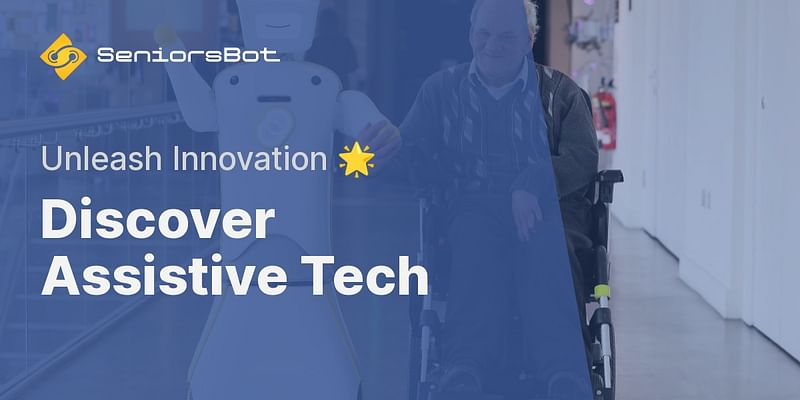Richard Stevens is a retired engineer who has always been fascinated by technology and its potential to improve the lives of seniors. He now dedicates his time to researching and writing about the latest gadgets and innovations for older adults. When he's not exploring the world of technology, Richard enjoys woodworking and playing chess.
Assistive technologies are designed to help older adults maintain their independence, improve their quality of life, and overcome any physical or cognitive limitations they may face. There are various types of assistive technologies available today, each serving a specific purpose. Here are some of the most common types:
1. Mobility aids: Mobility aids are devices that assist seniors with walking or moving around. These include canes, walkers, rollators, and wheelchairs. They provide stability and support, allowing older adults to stay active and navigate their surroundings safely.
2. Hearing aids: Hearing loss is a common issue among seniors, but hearing aids can help. These small electronic devices amplify sounds, making it easier for older adults to hear conversations, music, and other sounds in their environment. Modern hearing aids are discreet, comfortable, and offer advanced features like Bluetooth connectivity.
3. Visual aids: Visual aids are designed to assist seniors with low vision or blindness. These include magnifiers, large-print books, talking watches, and screen-reading software for computers and smartphones. These technologies enable older adults to read, write, and engage with the world around them.
4. Medication management devices: As we age, it's common to take multiple medications. Medication management devices help seniors organize and remember to take their medications on time. These devices can include pill organizers with alarms, automatic pill dispensers, and smartphone apps that send reminders.
5. Smart home technology: Smart home devices are becoming increasingly popular among seniors. These technologies can automate various aspects of daily life, making it easier and safer for older adults to manage their homes. Examples include voice-activated assistants like Amazon Echo or Google Home, smart thermostats, smart door locks, and security systems.
6. Telehealth devices: Telehealth devices allow seniors to receive medical care and consultations remotely. These devices can include video conferencing platforms, remote monitoring devices for vital signs, and wearable health trackers. Telehealth technology is especially useful for older adults who have difficulty traveling to healthcare facilities.
7. Personal emergency response systems (PERS): PERS devices provide peace of mind for seniors and their loved ones. These devices typically consist of a wearable button or pendant that can be pressed in case of an emergency. When activated, the device connects the user to a call center or designated contacts who can send help.
Remember, these are just a few examples of the many assistive technologies available today. It's important to assess individual needs and preferences when choosing the right assistive technology for yourself or a loved one. Consulting with healthcare professionals or occupational therapists can provide valuable guidance in finding the best solutions for specific needs.
At Seniors Bot, we strive to provide comprehensive information and reviews on the latest assistive technologies, gadgets, and lifestyle solutions for older adults. Our goal is to help seniors live their best lives by embracing technology that enhances their independence, safety, and overall well-being.














